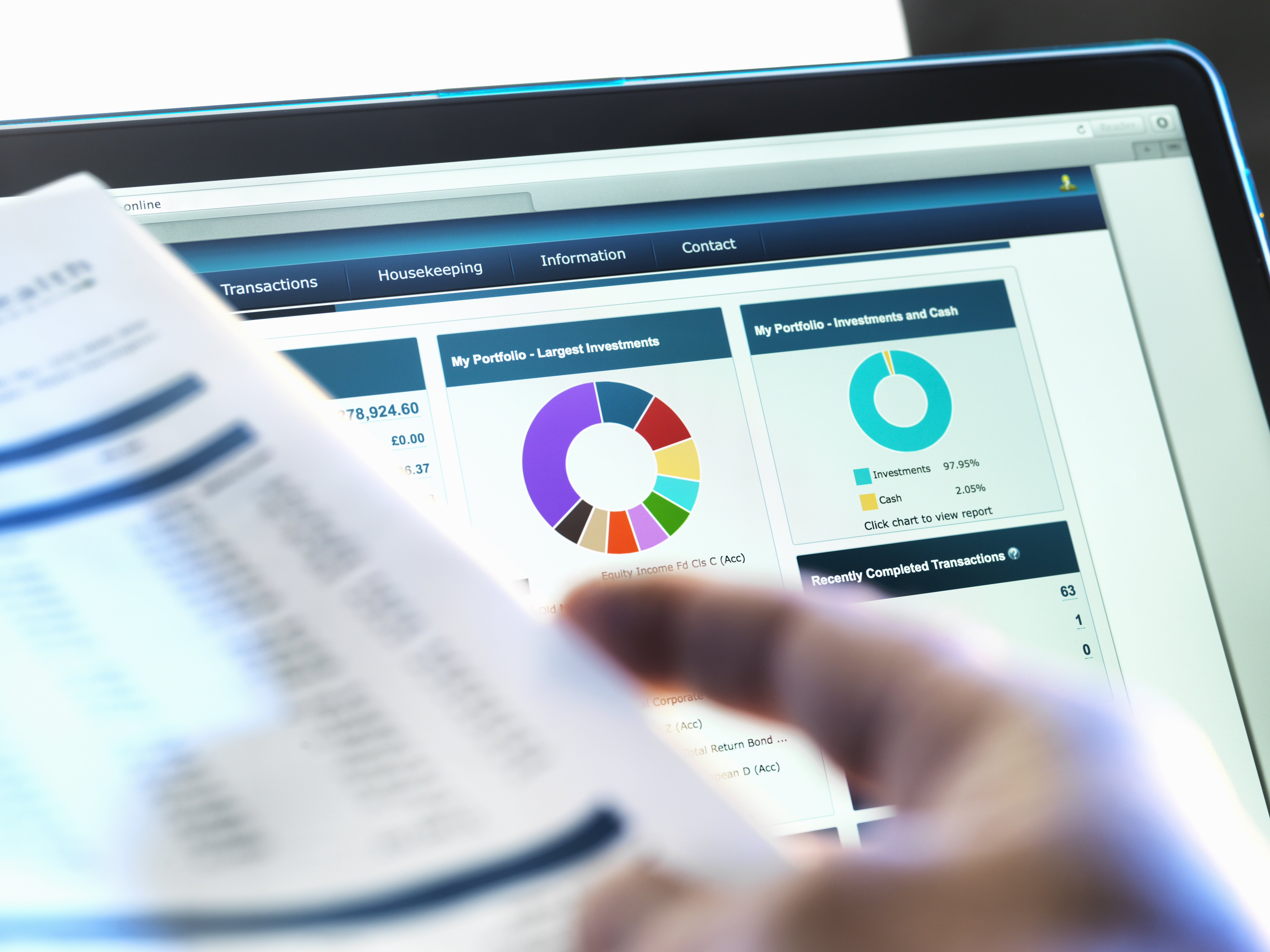Stocks and shares ISAs: everything you need to know
Our guide explains how stocks and shares ISAs work and how to open one, as well as looking at the tax implications and transfer rules.


Stocks and shares ISAs are a popular way for people to start investing and secure tax-free benefits.
Seen as suitable for long-term savers, the tax-free wrapper functions as a way to grow wealth over time. But how do stocks and shares ISAs work, and are they the right decision for you?
Here's everything you need to know.
MoneyWeek
Subscribe to MoneyWeek today and get your first six magazine issues absolutely FREE

Sign up to Money Morning
Don't miss the latest investment and personal finances news, market analysis, plus money-saving tips with our free twice-daily newsletter
Don't miss the latest investment and personal finances news, market analysis, plus money-saving tips with our free twice-daily newsletter
What is a stocks and shares ISA?
A stocks and shares ISA is a tax-efficient investment account. You can put up to £20,000 into ISAs each tax year, which starts on April 6 and ends the following April 5. This is known as the annual ISA allowance.
While cash ISAs work in a similar way to a traditional savings account, a stocks and shares ISA carries more risk, as the value of investments can go up or down. This type of account will allow the holder to directly invest their money in the stock market.
"For the more adventurous saver, this ISA provides the opportunity to invest in companies or funds across specific stock markets in the UK, US, Germany, Netherlands, Belgium, Austria and Australia," explains Simon Heath, partner at investment firm, Heligan Group.
Stocks and shares ISAs are available to anyone over the age of 18 who is a UK resident for tax purposes. Some non-UK tax residents may also be eligible for this ISA, for example, if they are a crown employee, or married to someone who is.
How do stocks and shares ISAs work?
A stocks and shares ISA provides holders with the flexibility to invest in markets and industries, riding the ups and downs of the stock market. This type of account often stands out for its potential to deliver higher returns than cash-based accounts.
Stocks and shares ISAs can be set up through banks or investment platforms, depending on a person's preference, and many providers will offer the ability to establish an account online. There are various pathways an investor may wish to consider, depending on their needs and goals.
The first — a self-select stocks and shares ISA — allows investors to pick their own shares for their tax-free investment. This option is suitable for those who wish to manage their portfolio, rather than relying upon a provider or fund manager. However, a self-select ISA requires more involvement and monitoring by the holder which is likely to take more time.
The alternative is a managed stocks and shares ISA, which can either be monitored by fund managers, or an automated service, known as robo-investing. In this instance, a potential investor will need to let their provider know about their risk tolerance, and the goals for their investment. This option could be suited to those who desire a more hands-off approach.
A stocks and shares ISA can be invested in companies, funds (shares from various companies placed into a single investment), or bonds (a type of loan made to a government or company).
How to open a stocks and shares ISA
Once you've decided the provider you want to invest with, it is generally encouraged to visit that provider's website. They are likely to provide an online application process, and will offer step-by-step instructions on setting up the account.
From here, the provider will often need details within an application form including name, date of birth, National Insurance number and address.
Once the account is set up, you will be able to start your first investment by depositing a one-off payment or setting up a direct debit for contributions at regular intervals.
Is a stocks and shares ISA tax-free?
A stocks and shares ISA has the benefit of being tax-free - helping investors to shield their money from the eroding impact of tax.
Returns in stocks and shares ISAs are free from income tax, and do not need to be declared on any tax or self-assessment forms.
This type of account is also sheltered from capital gains tax - the tax people pay on profit they make when selling an asset. However, this does not apply to profit made when selling investments within a stocks and shares ISA.
Any losses made on investments within this ISA cannot be used to offset capital gains applicable on other investments.
Dividend income tax also does not apply to stocks and shares ISAs, allowing tax savings on dividends exceeding the £500 tax-free allowance.
Are stocks and shares ISAs subject to inheritance tax?
While stocks and shares ISAs are shielded from the impact of capital gains tax and income tax, the same cannot be said about inheritance tax.
Tax-efficient benefits are available while a person is living, but the total value of this ISA will be treated as part of an estate when it comes to considering inheritance tax.
The standard inheritance tax rate is 40%, usually payable on parts of an estate above a threshold of £325,000, or up to £1 million for eligible estates with a family home. Stocks and shares ISAs will be included, alongside the deceased's other assets, in the estate's total value.
If the total value of the estate exceeds the threshold upon the individual's death, the excess may be taxed at 40%, including a stocks and shares ISA.
Consequently, ISA holders concerned about inheritance tax implications are encouraged to consult financial advisors to set out estate planning strategies.
How many stocks and shares ISAs can I have in the UK?
Many will consider whether it is possible to pay into two stocks and shares ISAs. Individuals can hold multiple ISAs in the same tax year. However, deposits must stay within the annual ISA allowance (which is £20,000 per tax year), set by HM Revenue and Customs (HMRC).
If you're holding more than one stocks and shares ISA, Clare Francis, director of savings and investments at Barclays Smart Investor, suggests taking a holistic view of your portfolio, rather than each ISA on its own.
"You'll then know how much exposure you have to particular markets or sectors, and it will be easier to ensure you don't inadvertently end up over-exposed to one region or sector," she explains.
However, there is a downside to having multiple accounts, as it often takes a lot of time to manage them and keep record of important details.
"It's surprisingly common for individuals to lose track of investment vehicles, whether ISAs, pensions or bank accounts. There is a requirement for providers to reasonably seek to reconnect account holders but is an increasing problem for financial institutions, estimated to be up to £50 billion in the UK," adds Heath.
While juggling more than one stocks and shares ISA may be a challenge, it is not impossible with a measured and monitored approach.
Can you transfer stocks and shares ISAs?
Stocks and shares ISAs can be transferred, but certain factors should be considered first.
Investors must contact both their current and new providers, typically by completing an online form provided by most providers or by visiting a local branch.
The existing ISA provider sells the shares, and the new provider repurchases them, potentially in the same companies. However, this may reduce the number of shares held in the new ISA.
"There may be fees associated with the move, which is the most important factor to consider, as this will impact the total amount in a portfolio," says James Norton, head of retirement and investments at Vanguard. Checking terms and conditions is vital for this reason.
Some providers cap ISA values and may reject transfers exceeding this limit or restrict the transfer amount.
Can stocks and shares ISAs be transferred into cash ISAs?
A stocks and shares ISA can be transferred into a cash ISA, and vice versa, providing savers and investors with the freedom to decide what happens to their money. People can also decide how much they wish to transfer, whether this is in part or in full.
But it is not an either/or option. Many fail to realise they may also be able to hold cash within their stocks and shares ISA, if they would like balance.
"This can be particularly helpful if you want to use your ISA allowance before the end of the tax year, but aren't sure where to invest yet, or are worried it may not be a good time to begin," explains Francis.
Investors could, for instance, pay cash in to use up this year's allowance, and then invest it at a later date.
Our "cash ISA vs stocks and shares ISA" guide explores how to choose between the different types of ISAs.
Get the latest financial news, insights and expert analysis from our award-winning MoneyWeek team, to help you understand what really matters when it comes to your finances.
Rebekah is a news and personal finance journalist with extensive experience in digital journalism. She is currently Newsletter Editor (Global) at TheWeek.com, and a regular contributor to The Week Unwrapped podcast. Rebekah was previously Senior Personal Finance Reporter at Express.co.uk. Her interests include pensions, savings and money saving tips.
-
 Metals and AI power emerging markets
Metals and AI power emerging marketsThis year’s big emerging market winners have tended to offer exposure to one of 2025’s two winning trends – AI-focused tech and the global metals rally
-
 8 of the best houses for sale with beautiful fireplaces
8 of the best houses for sale with beautiful fireplacesThe best houses for sale with beautiful fireplaces – from a 15th-century cottage in Kent to a 17th-century palazzo in Oxfordshire
